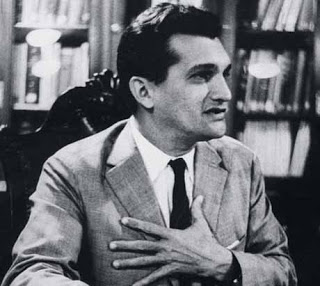Summary:
Celso Furtado (1920-2004)The International Journal of Political Economy, edited by Mario Seccareccia, had a special issue on Celso Furtado. There were articles by Ricardo Bielschowsky, James Cypher, and Rosa Freire d'Aguiar, Furtado's widow, among others. Below Bielschowsky's paper on Furtado's opus magnus, titled "Furtado's Economic Growth of Brazil: Masterpiece of Structuralism."From the abstract:This survey article reviews Celso Furtado’s most famous book and argues that he convincingly used the central elements of the Prebisch-ECLAC analytical construct—strucuturalism—to organize and study the economic history of Brazil from its discovery until the mid-twentieth century. Furtado shows how, throughout Brazilian history, successive cycles of economic growth before industrialization (mainly, the production of sugarcane in the Northeast in the seventeenth century, the gold cycle in Minas Gerais in the eighteenth century, and coffee production in the Southeast in the nineteenth and early twentieth centuries) have created, and thereafter perpetuated, some major characteristics of Brazilian underdevelopment: low production and lack of export diversity, as well as structural heterogeneity, specifically, a vast underemployed sector existing side by side with a high productivity modern sector.Read rest here.
Topics:
Matias Vernengo considers the following as important: Bielschowsky, Furtado, structuralism
This could be interesting, too:
Celso Furtado (1920-2004)The International Journal of Political Economy, edited by Mario Seccareccia, had a special issue on Celso Furtado. There were articles by Ricardo Bielschowsky, James Cypher, and Rosa Freire d'Aguiar, Furtado's widow, among others. Below Bielschowsky's paper on Furtado's opus magnus, titled "Furtado's Economic Growth of Brazil: Masterpiece of Structuralism."From the abstract:This survey article reviews Celso Furtado’s most famous book and argues that he convincingly used the central elements of the Prebisch-ECLAC analytical construct—strucuturalism—to organize and study the economic history of Brazil from its discovery until the mid-twentieth century. Furtado shows how, throughout Brazilian history, successive cycles of economic growth before industrialization (mainly, the production of sugarcane in the Northeast in the seventeenth century, the gold cycle in Minas Gerais in the eighteenth century, and coffee production in the Southeast in the nineteenth and early twentieth centuries) have created, and thereafter perpetuated, some major characteristics of Brazilian underdevelopment: low production and lack of export diversity, as well as structural heterogeneity, specifically, a vast underemployed sector existing side by side with a high productivity modern sector.Read rest here.
Topics:
Matias Vernengo considers the following as important: Bielschowsky, Furtado, structuralism
This could be interesting, too:
Matias Vernengo writes Development Finance, External Constraints and Effective Demand in Maria da Conceição Tavares’ Thought
Matias Vernengo writes Maria da Conceição Tavares (1930-2024)
Matias Vernengo writes Structuralism, Calssical Political Economy and Demand-led Growth
Matias Vernengo writes Special Issue of the Review of Keynesian Economics
Celso Furtado (1920-2004)
The International Journal of Political Economy, edited by Mario Seccareccia, had a special issue on Celso Furtado. There were articles by Ricardo Bielschowsky, James Cypher, and Rosa Freire d'Aguiar, Furtado's widow, among others. Below Bielschowsky's paper on Furtado's opus magnus, titled "Furtado's Economic Growth of Brazil: Masterpiece of Structuralism."
From the abstract:
Read rest here.

